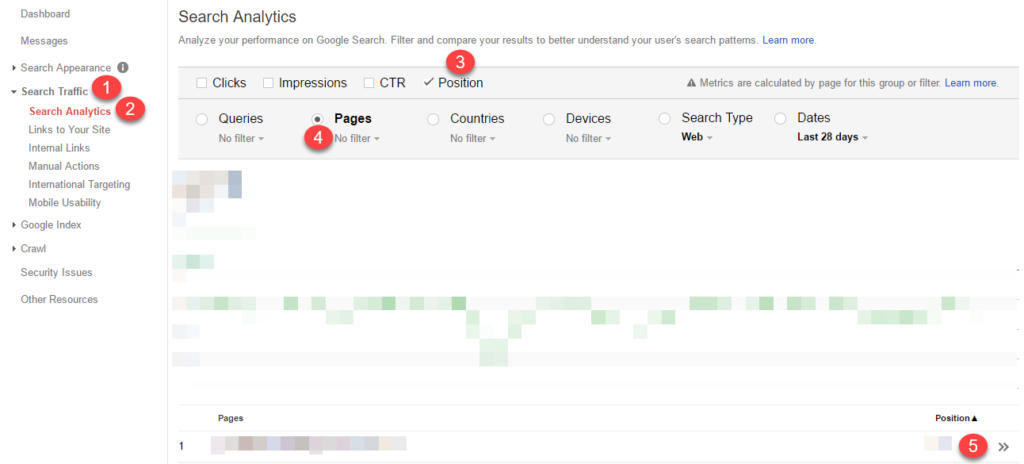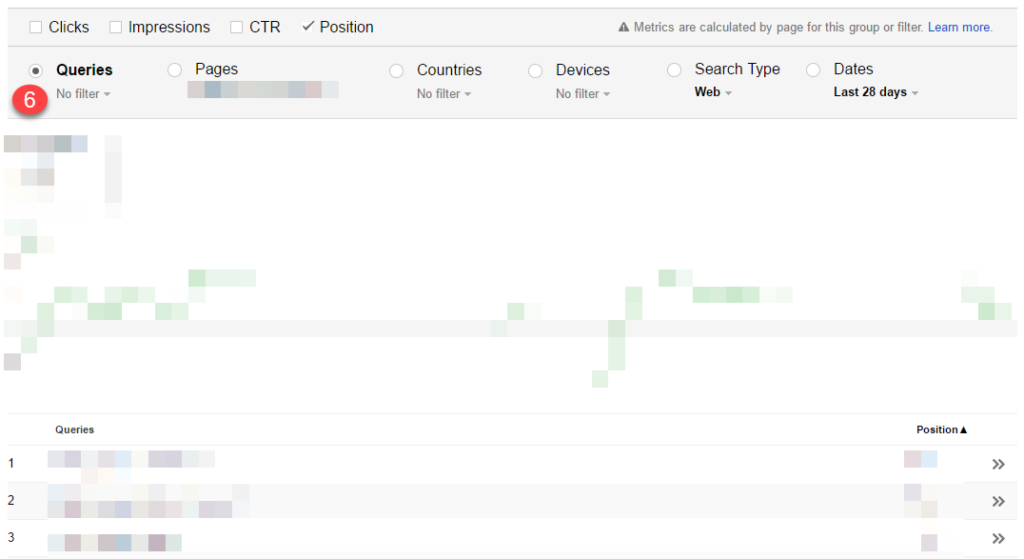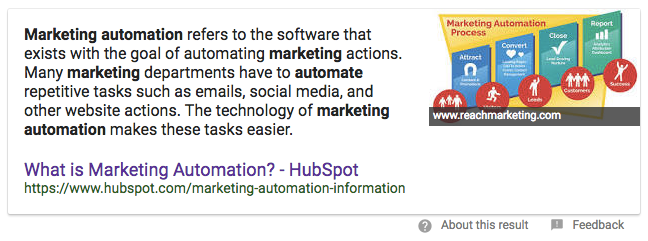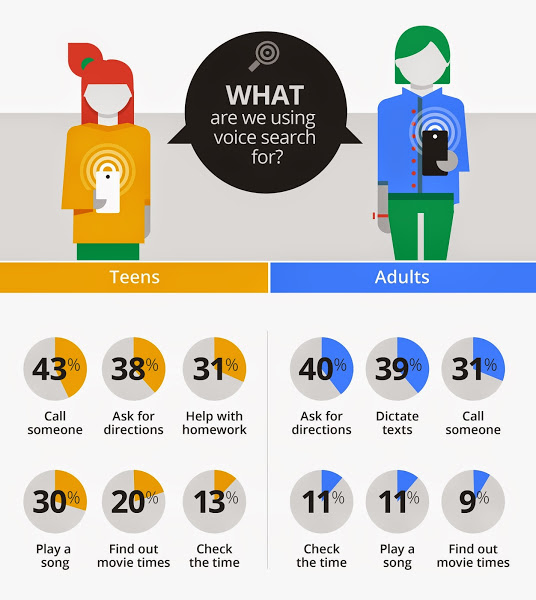3 Ways Voice Search Should Change Your SEO Strategy This Year [Free Workbook]
50% of all searches will be voice searches by 2020. That should mean big things for your SEO strategy now.
Voice search is gaining popularity for a variety of reasons: personal assistant devices are more accessible, natural language processing is more sophisticated, and typing on mobile phones is slow and error-prone.
The rise of voice search is already creating huge waves for SEO. Mobile is becoming even more important, keywords are becoming longer and more natural, and featured snippets — although already hugely beneficial — are becoming crucial for traffic and brand recognition. For these reasons, 2017 is the perfect time to start thinking about voice search and developing a targeted voice search SEO strategy.
Don’t miss our exclusive How to Optimize for Voice Search workbook. Scroll to the bottom of this post for a free download!
Will Voice Search Impact B2B SEO?
On the surface, voice search seems to be designed for getting recipes while cooking or finding nearby restaurants while driving, but there are other reasons people prefer voice search:
- 30% of people use voice search to get results faster.
- 24% use it to avoid having to type on small mobile devices.
- 12% use it to avoid confusing website menus.
While voice search is well-known for its B2C implications, these other rationales for adopting voice search are rooted in user experience. If voice search is simpler for users, its impact on B2B is inevitable.
We already know that 90% of executives use mobile devices to research business purchases. It’s a short leap from mobile typing to mobile talking.
Additionally, while Google is currently prioritizing B2C queries in voice search, it will inevitably move on to targeting B2B queries. When mobile shortcuts were launched, the implications seemed to be primarily focused on B2C, but we urged B2B marketers to pay attention and prepare for future impacts. Then late last month, Search Engine Land released screenshots that show Google may be testing a job search engine—officially breaking into a B2B vertical.
B2B companies will not be exempt for long, so B2B marketers must start thinking about how to optimize content for voice search. Optimizing now provides a significant opportunity to drive traffic from early adopters, and get ahead of competitors who are thinking of voice search as applicable to B2C only.
How Voice Search is Changing SEO
The accuracy of speech recognition software has improved massively in the last few years. Most major speech recognition platforms are now more than 90% accurate, and these improvements have led to higher adoption of the technology:
- 40% of adults now use voice search once per day.
- 55% of those under 18 years old use voice search daily (and that was in 2014).
Today’s buyers are increasingly relying on voice search, and tomorrow’s buyers are growing up with it: it will be second nature by the time they’re in corner offices. To get ahead of the trend, sites and content must be optimized for voice search.
Voice search SEO requires focusing on three major factors: mobile search, long tail keywords, and featured snippets.
1. Optimize for Mobile
Even if your audience isn’t using voice search for business queries (yet), the rapid growth is emphasizing mobile and pushing Google into a mobile-first ranking algorithm model. Voice search or not, your site needs to rock mobile search.
- Make sure your site is mobile-friendly. Run your site through Google’s mobile-friendly testing tool to find mobile optimization opportunities. Sites that use Flash will need a complete overhaul, and 100% responsive sites are ideal. Also consider optimizing mobile pages for AMP to take advantage of additional SERP display opportunities.
- Improve load speeds. Most mobile users will abandon a site if it takes longer than three seconds to load, so mobile optimization starts with improved performance. Run your site through GTmetrix to analyze its performance. GTmetrix will return a prioritized list of low-performing pages, as well as suggestions for improving load speeds.
- Consider the user experience on small screens. Text should be broken into smaller paragraphs to avoid walls of text on mobile devices. Buttons should be large enough to be tapped. Navigation should function properly on mobile, which often means getting rid of dropdown menus. Images shouldn’t be right- or left-aligned, and consider updating videos (or creating future videos) for full-screen vertical display.
By optimizing sites for mobile, B2Bs can cater to voice search and—as a bonus—earn higher search rankings. Load speeds, engagement signals, and mobile-friendliness are all current ranking factors, making mobile optimization crucial for desktop, mobile, and voice search.
2. Optimize for Long Tail Keywords
Voice search users are more likely to use natural language for queries. Natural language lends itself to long tail keywords—keywords of more than four words—that better represent conversational search phrases.
To cater to voice search, B2B marketers should optimize content for long tail keywords and natural-language queries:
- Group related long tail keywords and target them with all in a single piece of comprehensive content. Long-form blog posts and introductory guides are great formats for targeting related queries.
- Use conversational language in titles and subheads. A group of related long tail keywords can help outline the structure of a content piece. Some writers try to create clever titles or subheads, but the best SEO strategy is often to echo the user’s query in those places where text is emphasized. If sections of content are answering, “What is …?,” “Do I need …?,” “What are the pros and cons of …?,” then use those questions as headers.
- Create a user-friendly FAQ page to provide answers to questions related your brand, products, or services.
- Avoid keyword stuffing and unnatural language. Use synonyms and semantically similar terms instead of using the same keyword phrase over and over again. Additionally, never use exact-match keywords that don’t make sense or sound unnatural. Google is sophisticated enough to understand that “SEO companies NY” is the same thing as “SEO companies in New York.”
Again, optimizing for long tail search queries is important for more than just voice search. 50% of searches are for long tail keywords, and long tail keywords are 2.5 times more likely to convert. By optimizing content for long-tail keywords, you can cater to voice search, increase organic traffic, and enjoy higher revenue.
3. Optimize for Featured Snippets
Google often uses the text of featured snippets to provide answers to voice queries. When it does so, it reads the name of the providing brand/website along with the featured snippet. This can help build brand awareness, and exceptional answers can encourage searchers to visit the page providing the answer to learn more.
Dr. Meyers asked Google Home about Page Authority, and it read the featured snippet answer, referencing Moz as the source.
Mashable asks Google Home a series of questions that are commonly asked in interviews for prospective Google employees. A source is cited for each answered question.
For B2Bs, inform-intent content must target featured snippets. To uncover opportunities and optimize content for featured snippets:
- Compile a list of existing content that ranks on page one of results. You can find this in Google Search Console by expanding “Search Traffic” and selecting “Search Analytics.” View average positions by checking the “Position” box, and then select the “Pages” radio button. Finally, click each result with an average ranking of 10 or less, and change the radio button to “Queries” to find the keywords that result in that page.


- Determine user intent for keywords with page one rankings, by conducting a depersonalized search for each keyword. Review search results to determine if user intent is learn or purchase. Learn-intent keywords will produce educational results—such as blog posts and case studies—while purchase intent keywords will result in landing or pricing pages. Remove any purchase intent keywords from your list.
- Identify keywords that already produce featured snippets. Make a note of which queries already include featured snippets and which do not. For those that do, look at the source and what kind of information is being provided.
- Optimize content for featured snippets. Examine existing featured snippets to determine if they can be improved. If your content can be optimized to provide a clearer, more concise, or more thorough answer, you may be able to overtake the featured snippet spot. Make sure to use featured snippet keywords in H2s, and format content in the same way it’s provided in the snippet (list, table, etc.).
.
If there’s no featured snippet, it doesn’t mean Google doesn’t want one. There may just not be optimal existing content. Dig deeper into user intent research to determine exactly what users are searching for: a definition, a list of options, numbered steps? Are top-ranking results catering to that intent, or could your content be improved for featured snippet display? - Use original and relevant images. Often, the text and image in featured snippets come from two different sources. To optimize for featured snippet image display, include original images that illustrate featured snippet concepts, make sure to optimize them for keywords, and ensure images are clear when scaled down to thumbnail size.

The definition given in the featured snippet for “marketing automation” comes from HubSpot, but the image comes from Reach Marketing.
Optimizing for featured snippets is good for voice search, but it’s also good for overall SEO. Featured snippets allow sites to appear in position zero—above the number one result—even if the organic result position is much lower on the page. This can result in increased click-through rates and sessions, regardless of the device or type of search being used.
The Evolution of Voice Search
Google’s voice search technology has evolved rapidly. Within a single decade, the company went from providing voice search via phone call to selling personal assistants that can engage in two-way communications:
- 2006: Google receives a patent for voice search. The earliest use of this technology was a Google Labs project that allowed users to conduct a voice search by calling 650-623-6706, speaking a query, and clicking a link to view results.
- 2008: Voice search is integrated into Google Maps for certain mobile phones and iPod touch devices. The iPod functionality required a third-party microphone.
- 2012: Google Now is released as part of the Android 4.1 Jelly Bean operating system, integrating voice search into Chrome on mobile.
- 2014: Google Now is released for desktops, expanding voice search to all devices.
- 2016: Natural language processing technologies reach two important milestones: they’re just as accurate at recognizing words as humans, and they can type faster and more accurately than humans on mobile devices.
- 2016: Google releases Google Assistant across all devices—enabling two-way communications between devices and users—and begins selling its smart speaker, Google Home.
- 2017: Amazon’s new Echo Show is a voice search tool … with a screen. Currently being showcased for hands-free video calls and weather forecasts, but it can display web pages too. Amazon suggests CNN and Allrecipes, but people have been wanting to talk to computer screens for decades — research and business won’t be far behind.
https://youtu.be/NM4yEOdIHnc?t=1m40s
The Importance of Voice Search SEO in 2017 and Beyond
 Voice search is being adopted in increasing amounts. It provides a better and simpler search experience on mobile devices, making it important not only for B2C and local businesses, but also for B2B SEO. Optimizing for voice search is crucial for businesses of all types in 2017 and beyond—optimization improves the voice search experience, as well as SEO overall.
Voice search is being adopted in increasing amounts. It provides a better and simpler search experience on mobile devices, making it important not only for B2C and local businesses, but also for B2B SEO. Optimizing for voice search is crucial for businesses of all types in 2017 and beyond—optimization improves the voice search experience, as well as SEO overall.
An important place to start is with mobile optimization. Voice search simplifies the complexity of searching on mobile devices, and users will expect ease of searching to be followed by easy-to-use results. Improve site load speeds and ensure sites are designed with mobile in mind to enable users to access needed information quickly and easily on small devices.
What's Next?
Profound Strategy is on a mission to help growth-minded marketers turn SEO back into a source of predictable, reliable, scalable business results.
Start winning in organic search and turn SEO into your most efficient marketing channel. Subscribe to updates and join the 6,000+ marketing executives and founders that are changing the way they do SEO:
And dig deeper with some of our best content, such as The CMO’s Guide to Modern SEO, Technical SEO: A Decision Maker’s Guide, and A Modern Framework for SEO Work that Matters.







